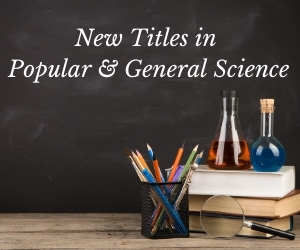In this engaging scientific memoir, Kenneth Ford recounts the time when, in his mid-twenties, he was a member of the team that designed and built the first hydrogen bomb. He worked with — and relaxed with — scientific giants of that time such as Edward Teller, Enrico Fermi, Stan Ulam, John von Neumann, and John Wheeler, and here offers illuminating insights into the personalities, the strengths, and the quirks of these men. Well known for his ability to explain physics to nonspecialists, Ford also brings to life the physics of fission and fusion and provides a brief history of nuclear science from the discovery of radioactivity in 1896 to the ten-megaton explosion of “Mike” that obliterated a Pacific Island in 1952.
Ford worked at both Los Alamos and Princeton's Project Matterhorn, and brings out Matterhorn's major, but previously unheralded contribution to the development of the H bomb. Outside the lab, he drove a battered Chevrolet around New Mexico, a bantam motorcycle across the country, and a British roadster around New Jersey. Part of the charm of Ford's book is the way in which he leavens his well-researched descriptions of the scientific work with brief tales of his life away from weapons.
Sample Chapter(s)
Chapter 1: The Big Idea (207 KB)
Contents:
- The Big Idea
- The Protagonists
- The Choice
- The Scientists, the Officials, and the President
- Nuclear Energy
- Some Physics
- Going West
- A New World
- The Classical Super
- Calculating and Testing
- Constructing Matterhorn
- Academia Cowers
- New Mexico, New York, and New Jersey
- The Garwin Design
- Climbing Matterhorn
- More Than a Boy
Readership: A memoir for general readership in the history of science.
“It was a great treat to read a book that's well-written, informative, and gets the science right. It is these personal recollections and descriptions; the fact that it is a personal and first-hand account of a unique time in history and a remarkable scientific and technical achievement that made this book so enthralling. This is an engaging account of a young scientist involved in a remarkable project.”
P Andrew Karam
The Ohio State University
“Ford's book is a valuable resource for anyone interested in the history of the H bomb and its role in the Cold War, and in how that work affected the life and career of an individual involved.”
Physics Today
"Personal memories are the book's greatest strength. Ford doesn't glorify, or apologize for, his work on the H-bomb. He simply tells it as it was. As a result, this is an engagingly human glimpse into the world of physics in the US in the early 1950s."
Physics World
"This very readable book by Ken Ford is a welcome and worthy addition to the story of the development of nuclear weapons. This book deserves to be read by anyone interested in the history of the H-bomb, its role in the Cold War, and how such work can affect the lives and careers of the individuals involved."
AIP Scitation
"Ford’s book, written by a physics–insider, makes a significant contribution to the history of the science, as well as to the history of the political conflicts around the H-Bomb program. Ford combines excellent descriptions of the nuclear learning process, along with humorous and illuminating discussions about the designer physicists."
Emeritus Professor David Hafemeister
California Polytechnic State University
"Ford’s book does not require any knowledge of physics. It is expertly written, entertaining, sometimes even humorous and filled with numerous personal anecdotes about Fermi, Teller, Wheeler and others."
Physik Journal

In 1950-1952 Kenneth Ford took a two-year break from his graduate studies in physics at Princeton University to work on the H bomb, returning to earn his PhD in 1953. Since then he has conducted research in nuclear physics, taught at several universities, and served as a college president and as the head of a nonprofit organization. After retirement, he taught high-school physics. In addition to his scientific papers, he has written textbooks and books explaining quantum physics to nonscientists — as well as a memoir on flying small planes. His books have won two writing awards and some have been translated into other languages. In 2006, he was recognized by the American Association of Physics Teachers with that organization's Oersted medal for contributions to teaching. He lives in Philadelphia with his wife Joanne. They have seven children and thirteen grandchildren.

























